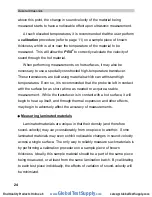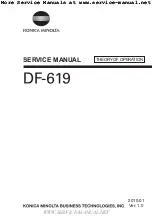
PR-8
2
Sonic Tester
19
strength of the waves, and thus, the
PR-8
2
's ability to detect the
returning echo.
Higher frequency ultrasound is absorbed and scattered more than
ultrasound of a lower frequency. While it may seem that using a lower
frequency transducer might be better in every instance, low frequencies
are less directional than high frequencies. Thus, a higher frequency
transducer would be a better choice for detecting the exact location of
small pits or flaws in the material being measured.
Geometry of the Transducer
The physical constraints of the measuring environment sometimes
determine a transducer's suitability for a given job. Some transducers
may simply be too large to be used in tightly confined areas. Also, the
surface area available for contacting with the transducer may be limited,
requiring the use of a transducer with a small wearface. Measuring on
a curved surface, such as an engine cylinder wall, may require the use
of a transducer with a matching curved wearface.
Temperature of the Material
When it is necessary to measure on surfaces that are exceedingly
hot, high temperature transducers must be used. These transducers
are built using special materials and techniques that allow them to
withstand high temperatures without damage. Additionally, care must
be taken when performing a "Probe-Zero" or "Calibration to Known
Thickness" with a high temperature transducer. See
Appendix B
for
more information on measuring materials with a high temperature
transducer.
www.
GlobalTestSupply
.com
Find Quality Products Online at:
sales@GlobalTestSupply.com








































